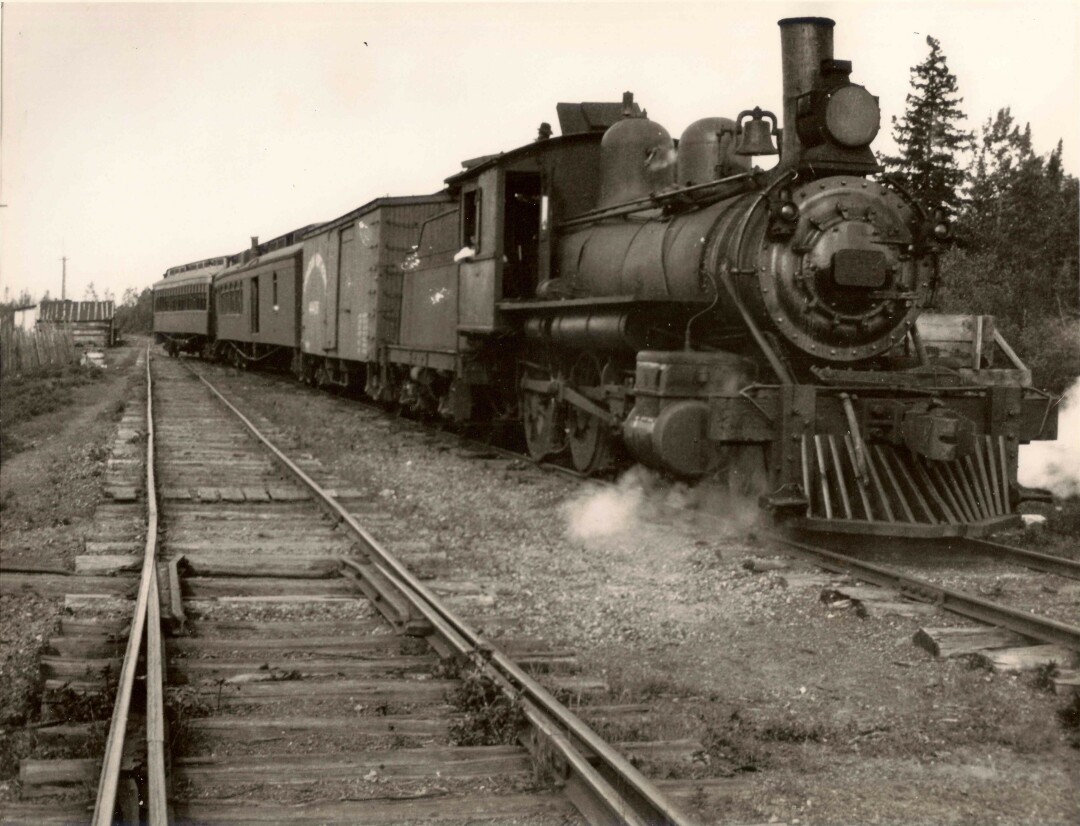The P and D

I’ll guest most north-country readers haven’t often thought of the P & D on account of not knowing of it. A worthy explanation.
The letters stand for the Port Arthur and Duluth rail line quickly come to stand for Poverty & Distress.
As often the case, a good idea ran off, in this case the rails. The good idea was; let’s say you’ve got lots of timber in Armstrong or Long Lac that if delivered to Port Arthur could build more houses than ever needed there. The improved good idea (where we come in) is move that timber to Duluth, with pretty much the same result, but then it’s Duluth’s problem. Get it?
There was, you may have heard of, a US side to the P & D. It was called the Gunflint to Canada. Look at a map you’ll see it’s a short route. A trolley could have done it if there were passengers, which there weren’t. The Canadian side was more fortunate having enough people living in the bush to use a passenger car in addition to freight.
I’m rusty on details, but the P & D had handsome stations, I believe at Stanley S of Kakabeka falls, Silver Mountain, NOLALU, short for NOrthern LAnd and LUumber, plus one more shy of Gunflint Lake. That one sat empty from the start, but still existed some decades ago when its preservation was promoted in case hikers wanted something to look at midst of nowhere while feeding grateful sketters and ticks. Progress was made fixing the dilapidated building where $1,000 worth of material might cost 10 times that delivered. Redone, it was much celebrated, by some.
I recall joy was brief due to an unexplained fire which distressed about as many people as were relieved. But not over yet. A new notion was born to rebuild the station from scratch. Guessing, I’d think going brand-new historic would run into millions. No thought is needed to see the entrepreneurial mind grasping a one-hundred-thousand-aire as far superior to a lowly ten-thousand-aire.
Whether the project flew beyond feasibility grant (ka-ching) planning, I can’t say, but I bet the plan still exists in the file where worthily impractical (aka as useless) projects are safely stored in bureaucratic vaults where they rest ready to be revived at need. Warm or morgue-cold, ashes of dead projects have strange ways of living on.
A loose (trust me on this) account of some things reviewed as personal experience isn’t accurate history. But, there’s some worth in reviewing the long-gone P & D as, if nothing else, an interesting curiosity relating (oddly ‘nuff) to something closer to home you may know as the Dorothy Molter cabins moved from Isle of Pines on Knife to Ely after Dorothy died and was no longer in a position to break the arms of anyone trying to mess with her property.
Y’u see, around the same time there’s a parallel Dorothy M story in another DM (Dorothea Miller) in Canada. The Canadian DM, known familiarly as Lady Lumberjack, began (as did the US DM) as a lumber camp nurse. Backwoods rail such as the P & D played a major part moving timber in the direction of those needing it on account of not enough population living where the big trees stood. Makes sense.
Any case, Dorothea is credited with providing much of the big timber that went into constructing the Port Arthur docks. In a way Dorothea helped cut the P & D off at the knee by helping build water transport for timber instead of costlier rail. Factors beyond control put PAID to the P & D, and Gunflint lines. It’s possible to find their traces. I’ll not say where I tripped over forgotten rail along the border.
As historian, I don’t count in part cause I don’t follow the proper history path of going to the same sources in search of what “middle” means in an old account about a portage. (Story too long for here.) The ones doing recognized history of our area breeze the same-ol’ with ballerina skill. Using reliable source records (in English) they shy from most all the original work being French up to the Freres on the border within this century. Little mention of that because it’s not mentioned where they go looking.
That’s fairly obvious to me, and I don’t think a person needs speak and read French to recognize the larger body of info and experience exists in French sources, including that of the early French Jesuits. Well anyway, what biased historian or reader wants to support what might be papist? Bias, I suggest, infects the doer as much as the done. It’s there. I trust my own sense to tell me a big piece of the past is Native or French. I can recognize it’s there and important without having the background to go into detail.
The piece of rail I stumbled over was part of the P & D, Gunflint story. A small part, but that’s what was left to be taken for it’s worth, a larger story than you or I know. The rail and some pilings, etc., are real, as is having met Dorothy Molter. Was she-her-who taught me to solo-flip a canoe. I’d call it a fair match because at fifteen the canoe and I were of similar weight with the canoe able to outwit me much of the time.
Flipping the canoe was not easy as Dorothy made it look. She never went rump over tea kettle as I did. Unlike me, Dorothy had experience, knew what she was doing and had strength to do it. Her lesson over, a chuckling Dorothy left the important work to me. Taught by her, I judge she knew better than believe teaching meant learning, a thing beyond any of us, expert aside, to cause.
Dorothy knew her limits. Ignorance of limits is where experts typically enter stage left. Fine with me who enjoys a costumed show. But teaching, lecturing, insisting or demanding aren’t same as learned experience. Unheard by experts, a patient spirit on Isle of Pines sighs on the night breeze while moonlight laughs.
